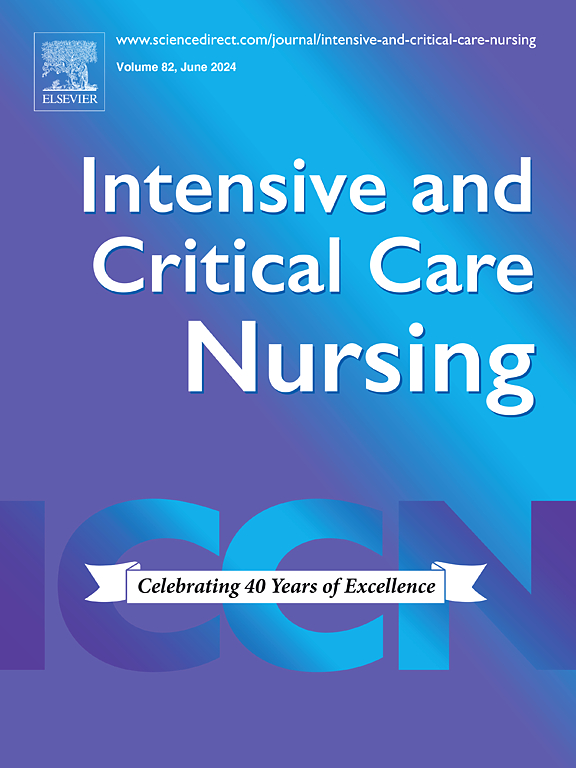The effects of structured family auditory stimulation on preventing ICU delirium among patients with unplanned admissions: A randomized controlled study
IF 4.9
2区 医学
Q1 NURSING
引用次数: 0
Abstract
Objectives
This study aims to evaluate the effect of a structured family auditory stimulation on preventing ICU delirium among patients with unplanned admissions.
Design
A three-arm parallel, single-blinded, randomized controlled trial was designed.
Research methodology
Patients were randomly assigned to one of three groups: structured family auditory stimulation (Group A), unstructured family auditory stimulation (Group B), and usual care (Group C). The primary outcome was delirium incidence, and secondary outcomes included delirium severity, delirium duration, delirium-free days, delirium subtypes, time to first delirium, the family anxiety and depression levels.
Results
A total of 213 patients were randomly assigned to three groups. There were no significant differences in demographic or clinical characteristics among the three groups. For the primary outcome, fewer patients developed delirium in Group A than in Group B and Group C (22.5 % vs. 26.8 % vs. 49.3 %, P = 0.001). For secondary outcomes, Group A had lower delirium severity scores than the other groups did (3.1 ± 0.4 vs. 4.0 ± 0.3 vs. 5.1 ± 0.3, P < 0.001). Patients in Group A had shorter delirium durations (2.0 vs. 3.0 vs.4.0 days, P < 0.001) and longer delirium-free days (3.0 vs. 2.0 vs. 1.0 days, P < 0.001) than those in Group B and Group C. The time to first delirium was 3.0, 2.0, and 2.0 days, respectively (P < 0.001). The SAS scores of the families in the three groups were 47.1 ± 5.7, 48.9 ± 5.5, and 56.5 ± 7.5 (P < 0.001) and the SDS scores were 38.2 ± 5.8, 38.3 ± 5.7, and 42.7 ± 7.2 (P < 0.001).
Conclusions
The results revealed that structured family auditory stimulation could reduce delirium incidence, decrease its severity, shorten the duration of delirium, increase delirium-free days, and prolong the time to first delirium among ICU patients with unplanned admission. Additionally, it could alleviate families’ anxiety and depression levels.
Implications for clinical practice
Structured family auditory stimulation prevents ICU delirium by maintaining the patients’ cognitive function and promoting early recovery, showing significant clinical potential in ICU delirium.
求助全文
约1分钟内获得全文
求助全文
来源期刊

Intensive and Critical Care Nursing
NURSING-
CiteScore
6.30
自引率
15.10%
发文量
144
审稿时长
57 days
期刊介绍:
The aims of Intensive and Critical Care Nursing are to promote excellence of care of critically ill patients by specialist nurses and their professional colleagues; to provide an international and interdisciplinary forum for the publication, dissemination and exchange of research findings, experience and ideas; to develop and enhance the knowledge, skills, attitudes and creative thinking essential to good critical care nursing practice. The journal publishes reviews, updates and feature articles in addition to original papers and significant preliminary communications. Articles may deal with any part of practice including relevant clinical, research, educational, psychological and technological aspects.
 求助内容:
求助内容: 应助结果提醒方式:
应助结果提醒方式:


